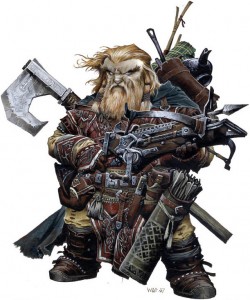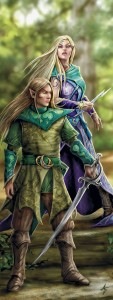 March of the Phantom Brigade, encounters 11 and 12 could be played in any order. Of course, my table did encounter 12 first. So last week we only covered the events that took place during the encounter 11 parts, skipping over encounter 12 until this week. A bit confusing I’ll grant you, but it worked really well. Be sure to check out the D&D Encounters: March of the Phantom Brigade (Week 11) field report if you haven’t already. That should help clear up any confusion.
March of the Phantom Brigade, encounters 11 and 12 could be played in any order. Of course, my table did encounter 12 first. So last week we only covered the events that took place during the encounter 11 parts, skipping over encounter 12 until this week. A bit confusing I’ll grant you, but it worked really well. Be sure to check out the D&D Encounters: March of the Phantom Brigade (Week 11) field report if you haven’t already. That should help clear up any confusion.
Last week at our FLGS we ran a double session covering encounters 11 and 12. The heroes had the opportunity to explore the two rooms that made up the main floor of the Dwarven Monastery before heading down to the caverns below. The adventure clearly indicated that the PCs could explore the rooms in whichever order they wanted to. In order to avoid any spoilers for groups that chose to run encounter 12 first, we simply ran both encounter back-to-back.


